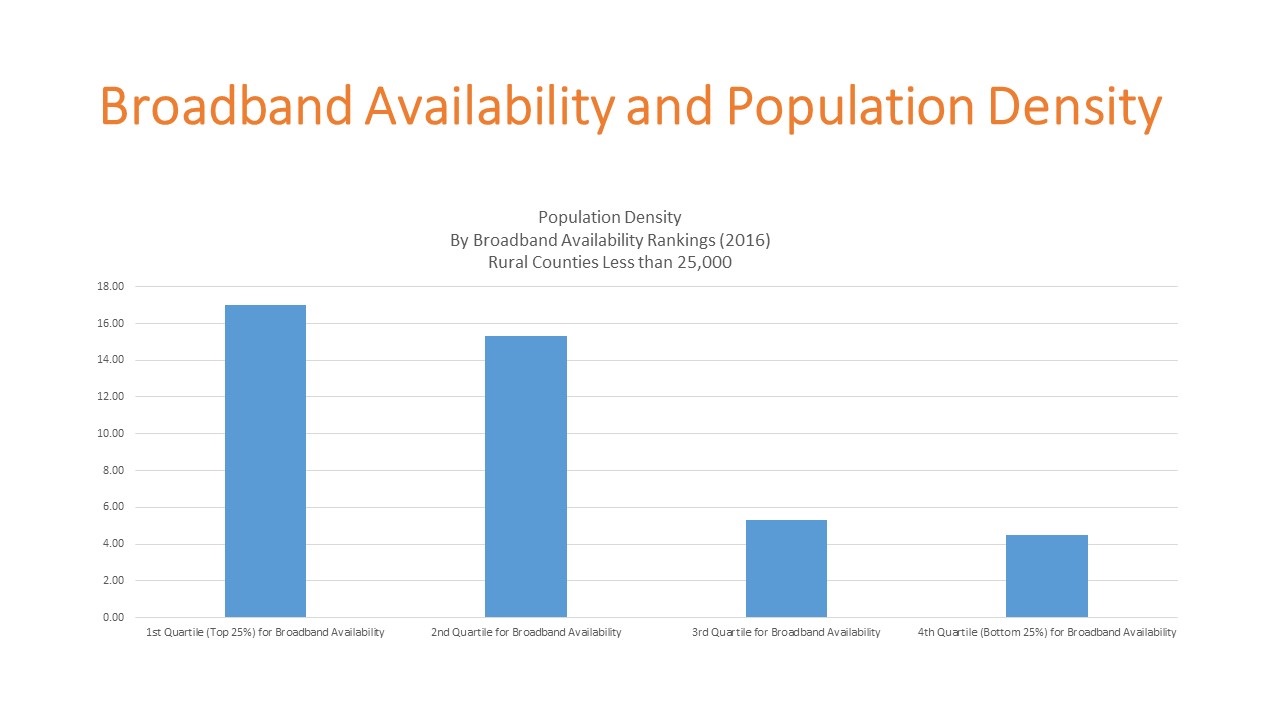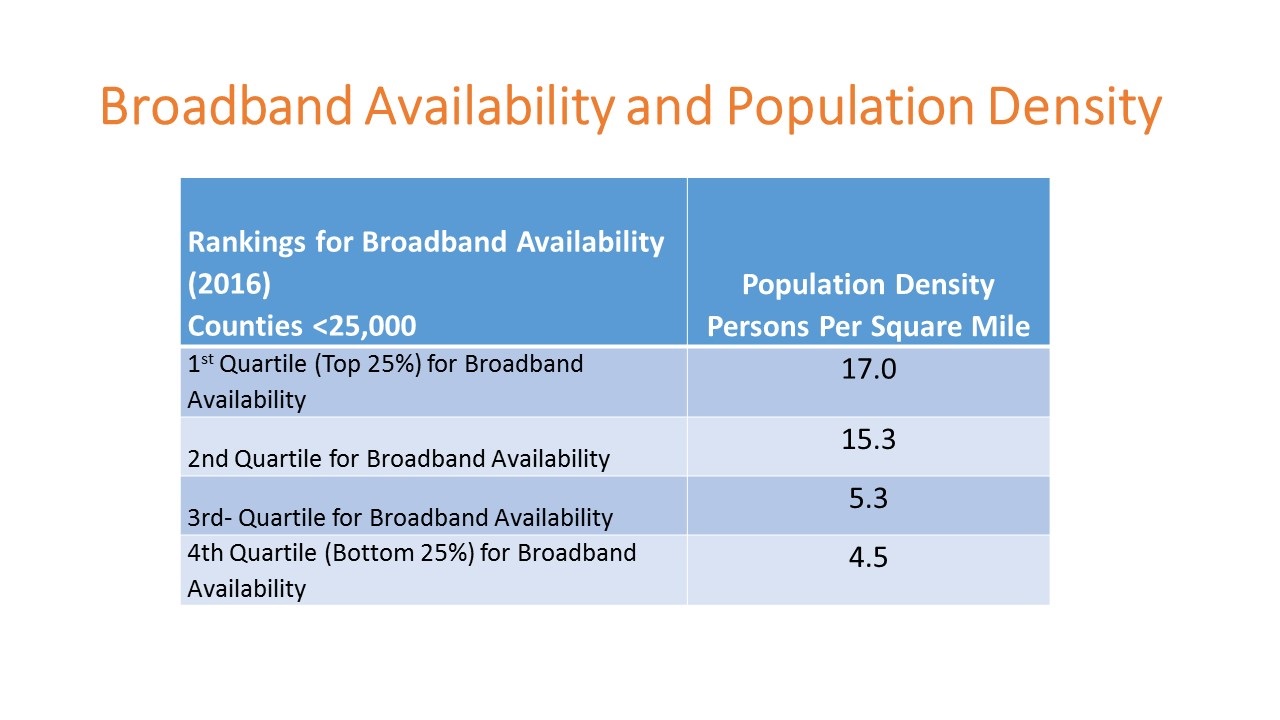Rural Nebraska Counties with Widespread Broadband Availability Have Greater Population Density

By Anne Byers, Nebraska Information Technology Commission
Because the cost of deploying broadband per customer increases as population density decreases, it is not surprising that rural counties in Nebraska with widespread broadband availability have a higher average population density than counties with less widespread broadband availability. The average population density of rural counties with the greatest broadband availability was 17.0 persons per square mile compared with an average population density of 4.5 persons per square mile for those counties with the least broadband availability. See the following chart and table.


Methodology:
Nebraska counties (excluding the state’s 12 largest counties with populations over 25,000) were ranked by broadband availability and split into 4 groups or quartiles. The average population density was calculated for each quartile.
What Counties Do We Consider Rural in This Analysis?
The Census Bureau classifies a number of counties that most Nebraskans consider rural as metropolitan or micropolitan because of their proximity to larger communities. Some of these counties have fewer than 8,000 residents. Rather than using the Census Bureau classification, I looked at counties with populations of less than 25,000. This eliminated 12 counties including the state’smetropolitan areas and regional trade centers. These 12 counties are Douglas, Lancaster, Sarpy, Hall, Buffalo, Dodge, Scotts Bluff, Lincoln, Madison, Platte, Adams, and Cass Counties.
Sources:
Federal Communications Commission. 2018 Broadband Deployment Report.
County level data can be found at http://nitc.ne.gov/news/community/2018ruraltable.pdf
Nebraska Broadband Blog Home

